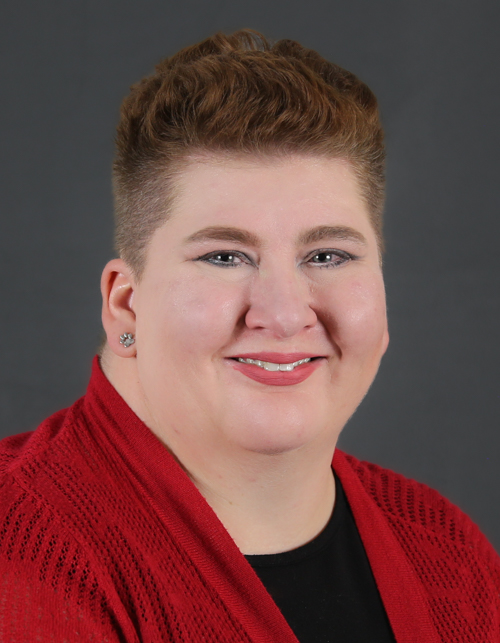So, what’s this neurodiversity thing anyway?

Imagine that you’re in a long boating race. It’s not just about speed, but you’re also being scored on route, agility, skill, and navigating adverse weather. Everyone else has been assigned a motorboat, but you’ve been stuck with a sailboat.
While your competitors can press a button and go, you require special equipment, experience, and skills just to get the boat moving in a forward direction. You’ve been sailing before, but deep down, you know that no two trips are the same. Some things you can do much better than even your competitors with motorboats, but the challenges are also much greater.
This is what it is like to have Attention Deficit Hyperactivity Disorder (ADHD), one of the many types of conditions that are under the neurodivergence (ND) umbrella.
If you’re lucky, then perhaps you are equipped with a small engine to help when there is no wind (medication) or other tricks you’ve gained through special instruction (like therapy or special accommodations). Perhaps you are just trying to get through the unpredictable sea using your guts, grit, and familiarity with this particular racecourse.
In this article, I’ll break down the idea of neurodivergence, the most common conditions associated with the term, and what having a “different” brain means, including upsides and challenges. Think of it as a preview of the race of vet medicine when all you (or your colleagues, employees, or clients) must work with is a sailboat.
Wired differently: Neurodiversity and brain structure
The term neurodiversity came about in the 1990s and is often used in the context of autism spectrum disorder, ADHD, dyslexia, bipolar disorder, and other neurological or developmental conditions. It promotes the idea that there is no “right” way of thinking/learning/behaving, and that differences are not deficits.
It’s a persistent myth that “everyone is a little neurodivergent;” we all have “ADHD moments;” or that we all can be a “little autistic.” What people with no diagnosable neurological differences (sometimes referred to as neurotypicals) assume is that we ND folks experience our symptoms and traits sometimes and can choose to adapt to “normal” ways of thinking and behaving when we want to.
This simply isn’t true. For someone to be neurodivergent, the key is that there are “persistent patterns” that meet certain criteria. These patterns happen all the time, not just once in a while. It isn’t a choice, it is simply our truth, rooted in how our brains are wired.
Research shows that people with ND diagnoses have variations in the physical structure of their brains. For example, someone with ADHD has a smaller prefrontal cortex (where things like emotions, focus, judgement, and motivation are regulated). The brains of people with autism show a variety of structural differences from their neurotypical counterparts, according to a 2018 study in the American Journal of Psychiatry. And dyspraxia, which affects motor skills and spatial awareness, is now thought to be caused by varied development of neurons in the brain.
Defining neurodiversity
Neurodivergence and neurodiversity aren’t clinical terms, but they are used by a social movement to show solidarity with other people who have a medical diagnosis in at least one learning disorder, developmental disorder, or other related or interrelated mental illness condition.
Indeed, there is a higher likelihood that if you have one neurodivergent diagnosis like ADHD or autism, that you will also have a comorbid (existing simultaneously with and usually independently of another medical condition) neurodivergent disorder.
I have ADHD and dyspraxia. My favorite author has both autism and obsessive-compulsive disorder. While it’s common for neurodiverse conditions to be comorbid with each other, it is also common for them to be experienced with mood disorders—and neurodivergent disorders can often be misdiagnosed as mental illness.
Conditions under the neurodivergence umbrella
Some of the most common conditions under the neurodivergence umbrella, according to a recent article in Forbes magazine include:
- ADHD. Individuals may have difficulties holding their focus and managing memory, behaviors, and emotions.
- Autism. Also called spectrum disorder, this includes a broad range of conditions that may include challenges with socializing and social skills, cause repetitive behaviors, and trigger speech difficulties.
- Dyslexia. This can include misreading, miswriting, or misspeaking certain items, as well as confusion with letters or misunderstanding of word organization or pronunciation.
- Dyscalculia. A misunderstanding of math concepts, such as confusion when reading numbers and symbols, an inability to consistently remember numbers and rules for calculation, or trouble with mental figuring.
- Dysgraphia. A learning disability that involves writing, such as unusual pencil grip and body position, illegible handwriting, and an aversion to writing or drawing.
- Down Syndrome. With this condition, individuals are born with an extra chromosome that ultimately changes how their body and brain develops and may lead to mental and physical challenges.
The Cleveland Clinic in Ohio also includes the following:
- Mental health conditions like bipolar disorder and obsessive-compulsive disorder.
- Tourette syndrome: a disorder that causes uncontrollable movements and vocal sounds called tics.
Person-centered or identity-centered language? It’s best to ask
It’s important to realize that ND folks usually have a preference for person-centered language (“I am a person with ADHD”) or identity-centered language (“I am autistic”) when discussing our diagnosis, challenges, and superpowers.
Everyone is different, but everyone appreciates being asked their preferences when it comes to identity and language. Heck, not everyone resonates with neurodivergent or neurodiversity as labels either, and that’s perfectly valid.
Superpowers, not symptoms
Focusing on the symptoms and challenges doesn’t present the whole picture of our talents and skills. In fact, because our brains are wired differently, we often have some “special abilities” such as:
- Advanced concentration
- Superior fine-detail processing and memory
- Increased adaptability and resilience
- Better innovation and creative problem-solving
- Enhanced intuition and empathy
- Superior visual and 3-D imagination
- Better pattern recognition and observational skills
- Superior verbal skills and expressiveness
- Increased mechanical skills
- Strong authenticity, honesty, and expressiveness
We are just scratching the surface of what it means to be neurodivergent in the workplace as well as in our personal and professional lives. Our understanding of these conditions and the value they can bring is expanding and becoming more nuanced as we continue to make new discoveries.
We may not all have a motorboat, but when we’re supported properly and made to feel welcome, well, history is full of those who conquered the seas with a sailboat.
Further reading
What is Neurodiversity? (Harvard Health blog)
https://www.health.harvard.edu/blog/what-is-neurodiversity-202111232645
Everything You Never Knew About the ADHD Brain (Attitude magazine)
https://www.additudemag.com/adhd-brain-prefrontal-cortex-attention-emotions/
Autism Brains Show Widespread Alterations in Structure
https://www.spectrumnews.org/news/autism-brains-show-widespread-alterations-structure/
What is Dyspraxia? (Queen Mary University of London)
https://dds.qmul.ac.uk/dyslexia/whatisdyspraxia/index.html
Neurodiversity and Other Conditions (ADHD Aware)
https://adhdaware.org.uk/what-is-adhd/neurodiversity-and-other-conditions/
What Does It Mean to be Neurodivergent? (Forbes magazine)
https://www.forbes.com/health/mind/what-is-neurodivergent/
Neurodivergent definition (Cleveland Clinic)
https://my.clevelandclinic.org/health/symptoms/23154-neurodivergent
Neurodivergence at a Glance (Johns Hopkins University)
https://imagine.jhu.edu/blog/2022/10/05/neurodivergence-at-a-glance/
Wendy Ringie is a life-long Colorado resident who was diagnosed with ADHD and dyspraxia in elementary school. Raised in a family of teachers, she pursued the twin passions of writing and global citizenship in her teens and young adulthood. Before coming to AAHA as a Member Experience Specialist, she volunteered at several no-kill shelters and stumbled into vet medicine as a CSR. She lives in the Denver suburbs with her husband, two dachshunds, and way too many science fiction and fantasy books.
Photo credit: © the8monkey E+ via Getty Images Plus
Disclaimer: The views expressed, and topics discussed, in any NEWStat column or article are intended to inform, educate, or entertain, and do not represent an official position by the American Animal Hospital Association (AAHA) or its Board of Directors.




